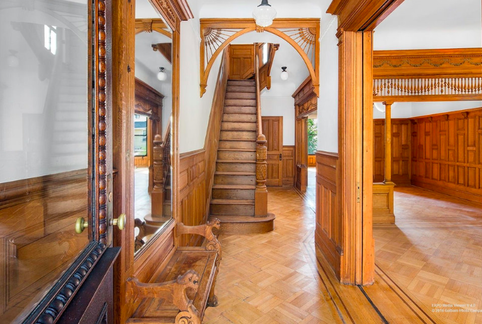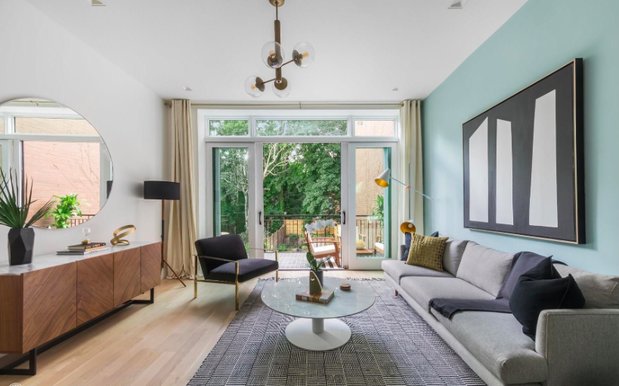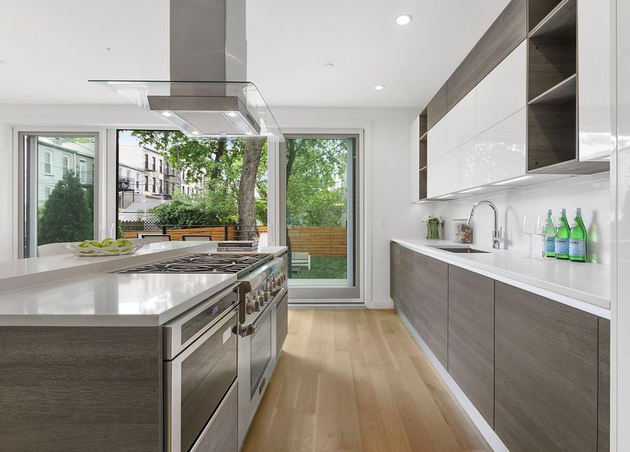Brooklyn brownstones have long been a staple of classic New York. Hip-Hop and jazz drenched Bed-Stuy was personified by Spike Lee’s movies of the ’80’s and ’90’s set around iconic brownstones like “Do The Right Thing," “Mo Better Blues” and “Crooklyn." Upscale Park Slope was depicted in artsy films with literary, self-involved parents (“The Squid & The Whale”) and romantic comedies (“Duplex”.) Lazy Sunday mornings with the New Times, coffee brewing and a backdrop of dark woods, ornate moldings and Persian rugs over original hardwood shelves and packed bookshelves became a familiar sight. New Yorkers, those that could afford it, became obsessed, with owning and renovating these ornate Victorian homes, mixing century old wood with stone, stainless steel and recessed lights. Although, a recent development has occurred which is not to everyone’s taste. Brooklyn brownstones have started to resemble high priced Manhattan condos.
In the world of quick flips and maximizing purchase and construction dollars, renovating and restoring a brownstone for profit is the equivalent of climbing Mount Everest for some exercise. Stripping and sanding and staining intricate wainscoting and moldings is a painstaking and costly affair that doesn’t result in a bump in resale value. Rather than restore the houses are denuded of their original charm, replaced by paint, expensive stone, light wood floors, sputnik lighting and gleaming commercial grade appliances. A scan of the NY Times real estate section shows a number of these type of townhouses asking top dollar.
Park Slope’s 59 Lincoln Place ($4,490,00), 151 President St in Carroll Gardens ($3,500,000) and 453 DeGraw Street in Gowanus ($4,200,000) are visually stunning and have a classic brownstone facade but inside are hardly recognizable from the conventional detail dripping Victorian houses we expect
“There’s a difference between a restoration and renovation,” says Abdel Tarchid, a designer with Scavolini Kitchens in Brooklyn, who has been involved in many such renovations including 292 16th St in Park Slope. “Developers are not in the business of restoring. Certainly many of our clients, come to us for something very modern but tasteful, with clean lines where the electric and plumbing along with heating and cooling systems can be installed in an efficient manner. It would be painstaking to do if you had to navigate around old pipes and woodwork,” he says.
Doug Bowen a broker with Douglas Elliman has sold around 100 Brooklyn townhouses. He sees the kitchen as a driver for large-scale renovations in historic townhouses.
“The most successful townhouse renovations manage to craft open-plan kitchens seamlessly into these antique properties,” he told the Appliances Connection blog. “Townhouse configurations in the prime parts of Brooklyn and Manhattan trend to either a single family or a two family. Most commonly an upper triplex with a garden rental. Both are most successful with kitchens at the rear that bring the outdoors inside and visa versa.”
For those attached to these historic townhomes, who believe stripping them of their Victorian majesty is almost sacrilegious, a replacing battered vintage molding with newly made ones is often a faster, if still expensive, undertaking, resulting in something truly spectacular.
In 2017, 1 Verona Place shattered the sales record for a townhouse in Bed-Stuy when it sold for $3.3 million. The entire interior was gut renovated and with all new moldings custom built apart from part of the staircase and painted in black lacquer as was fashionable a century ago. The developers were Christiaan Bunce, a principal at the design firm KGBL, and Adam Dahill, a mortgage broker.
What their renovation budget was, they didn’t disclose. The lofty sale though, succeeded in raising the comps for the neighborhood of other houses without their meticulous renovation.
“Old houses have layers of visual interest created by the elaborate details, but you don’t have to keep them all,” said Kimberly Neuhaus, founder of the full-service architecture firm Neuhaus Design who recently renovated 167 6th Avenue in Park Slope, Brooklyn.
“When you renovate an old home many of the materials are pre-existing. Your new interventions should be constructed of materials that you love.”










